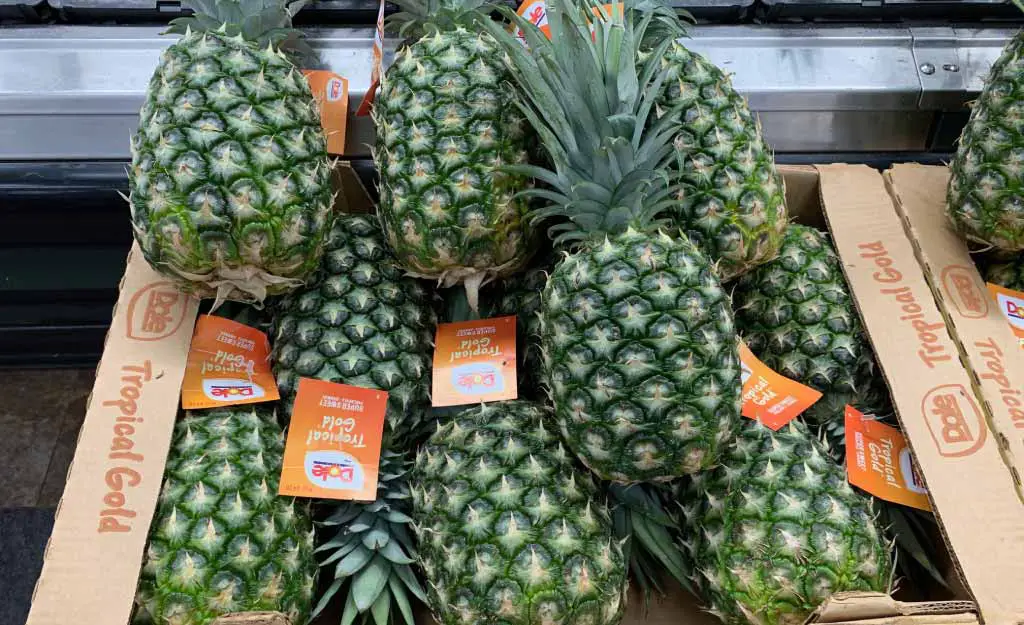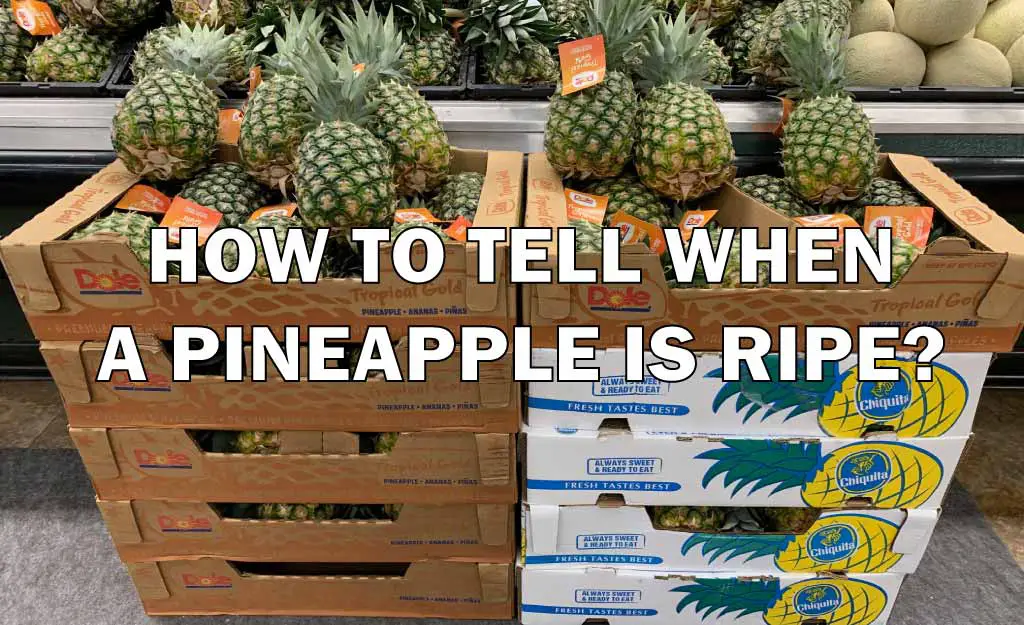Pineapples are a beloved fruit all over the world for their unique sweet and tangy taste. And most often than not, they are the key ingredients to special original dishes that you might want to try out. So, when you are in the grocery shop, how can you tell when a pineapple is ripe?
You can tell whether a pineapple is ripe or not by at least three tried and true methods. These include – smell, feel, and looks. Other than these specific three, several other factors play into the ripeness of a pineapple.
Even though a lot of these ways are straightforward, a lack of information can often confuse you while you are shopping for ripe pineapples. So, let’s have a little discussion and find out what to look for when selecting a pineapple.
The 4 Things to Check When Looking for a Ripe Pineapple
Even though it seems frustrating at times, once the fixation takes over, you can tell whether a pineapple is ripe or not just by intuition. And to achieve that level of experience, you can start following these simple tricks right away.
Check for A Sweet Smell
Now this one requires a bit of a nit-picky nose. If someone ever called you out on your heightened sense of smell, this is your chance to shine.
Every pineapple has a distinctive signature ripe smell. Which is of course, faintly sweet with a hit of tanginess. You can use this signature smell to figure out the ripe pineapples easily.
Now, this method requires a bit of practice to get adjusted to. Your nose will not be able to catch up on the smell separately for the first few times. But gradually it will become accustomed to the smell and then it will be easier to pick up the hint.
To get yourself used to the smell, there’s no other alternative to a bunch of trials and errors. Smell the base i.e., opposite to the leafy section of pineapple for better results. Remember, it should be faint but spicy of a sweet smell and not the other way around.
Look for Orange Coloring
Like most other fruits, pineapples start to change their color as well when they are on the verge of ripening. You can detect the change in coloring to figure out how raw or ripe the pineapple is.
Normally, completely raw pineapples are green in color. In addition, they are pretty small so everyone knows not to pluck them as they aren’t ready yet. The leaves or fronds aren’t as developed either which is a dead giveaway that those pineapples are raw.
On the other hand, when the pineapples finally start to ripen, their skin will gradually change from green to golden yellowish-orange. It will slowly spread around from the eyes and take over the green surface like that of a rising sun on the mountainside.
So, if you are on the hunt for ripe pineapples, look for the ones that have a golden yellowish hue to them with just a hint of orange. Most often than not, the more vibrant the color of pineapple is, the sweeter it tastes.
Give A Soft Squeeze
Now, this is a weird tip but I got to say, it does work out a lot of the time. To know whether a pineapple is ripe or not, just simply give a soft squeeze to it and see whether it presses down a little or not.
Think of it like this. Ripe pineapples mean that they are juicy, right? So, it’s obvious that the juicy interior will be comparatively soft. As a result, if you gently squeeze the outer surface and it seems rock solid, you’ll instantly know that it’s raw.
And if it moves down a little, you’ll know that it’s at peak ripening condition. However, if you squeeze and the flesh seems to be falling apart, that might mean that it’s way too ripe. These pineapples are almost rotten and that’s why you have to watch out for such instances as well.
Check the Weight Out
Similar logic plays into this trick like that of the squeezing one. Since a ripe pineapple is supposed to be juicier, it should be much heavier than normal raw pineapples.
Raw pineapples are all flesh and no juice. That makes them harder and lighter. So, to know whether a pineapple is ripe, check its weight against the other pineapples. If it seems heavier within a similar size range, it’s more than likely that it’s ripe.
That being said, you want the ripe pineapples and not the rotten ones, right? When pineapples are too ripe, they weigh more than usual as the flatulence level is much higher due to all the juices. Keep that in mind while you are weighing them against each other.
However, the intensity of some of the factors may vary or fluctuate from time to time due to geographical conditions and climatic changes. So, it’s important to consider that while shopping for ripe pineapples in your local grocery or fruit store.
Pineapples Stocked During March to May
You can indeed find pineapples throughout the year as there’s a growing demand for them all the time. However, they are more readily available during the months of March-July in most countries.
To be more exact, they are good for harvesting during the summer and late summer periods as the extra heat helps to ripen the pineapples. So, if you buy a pineapple during this period, it’s likely that you’ll find a fresh and ripe one at your local grocery store.
The off-season pineapples are often not as soft or sweet. Again, pineapples aren’t accustomed to cold weather so if you buy around that time, the interior will probably be hard and tasteless. So, it’s best to stay away from off-season pineapples as there’s a chance that they are adulterated with ripening chemicals.
This stands true for most fruits and vegetables i.e. anything organic that’s perishable. It’s okay to buy or eat off-season products only if they have been properly preserved from before. If not, there’s no point in buying overpriced products and they won’t even taste half as good as the seasonal ones.
Misconceptions Considering Ripeness of Pineapples

Like most other things, you’ll find misdirected information while choosing a ripe pineapple as well. I have already explained a few of them above and here’s a short overview of the rest of them.
First of all, a sweet smell doesn’t always mean that a pineapple is ripe. All pineapples have a fragrant smell and it starts from an early age. You should always look specifically for a faint sweet smell with a hint of sourness or tanginess.
Furthermore, too much sweetness indicates a high level of juiciness which can refer to both ripe and rotten pineapples. But rotten ones won’t smell as fragrant as the ripe ones so that’s a way to differentiate them.
Again, large and developed fronds indicate that pineapple is both ripe and juicy. But if the leaves are brown and dry, it’s too late for that pineapple.
And finally, a pineapple being pricklier has nothing to do with its sweetness. Some pineapple variants are just pricklier than others by nature.
Conclusion
So, do you now know how to tell when a pineapple is ripe? Hopefully, this little guide helped you to figure out the key criteria in that matter. With a little practice and experience, you’ll be able to differentiate the ripe pineapples from the raw ones in no time at all.

